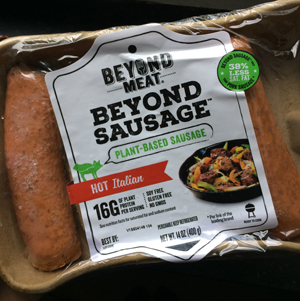Investing in companies that regularly pay dividends has been one of the best strategies to reward investors. But not all dividends paying companies are the same. There are some guidelines you may want to follow in order to look for potentially good dividends paying companies. One of the most asked questions about dividends investing is “Should I just buy the highest dividend stocks for my portfolio?” If you are not careful enough about dividend investing and are only interested in high dividends paying companies without considering the fundamentals, you might be potentially heading into a situation called “Dividend Trap”.
So what’s a dividend trap you may ask. Suppose you come across an XYZ company that sells furniture. The company earns $20 million per year in net income. XYZ Company is listed in the stock exchange and has a price to earning ratio (P/E) of 15. Because of the valuation that Wall Street has given to the company, XYX Company is worth $300 million in terms of market capitalization.
The good thing about XYZ Company is that it pays $9 million out of the $20 million in net income as dividend. The rest of the profit is re-invested into the company for other purposes such as hiring more people, buying more machines, acquiring land and building new offices. The business of XYZ Company is divided into 20 million shares. With that, the company has basic earnings per share of $1. With a PE ratio of 15, the stock price is $15. Since this company is paying out dividends, the dividend payout per share is $0.45, resulting in a dividend yield of 3%.
A dividend yield of 3% looks quite attractive for a dividend income seeking investor. But what happen to the dividend yield when the economy is not doing well, resulting in selling-off of stocks in the market due to weak market sentiment. When the economy tanked, most investors tend to sell their stocks, resulting in lower valuation for most companies. Suppose XYZ Company got affected and the valuation falls to 6x earnings, the market capitalization will now become $120 million. At this level of valuation, suppose the earning per share remain the same at $1, the stock price will be $6. If XYZ Company is still paying out the $0.45 per share as dividend; the yield will now look like 7.5%, which is more than double the previous yield.
During economy downturn, a yield of 7.5% is an extremely attractive investment. You could literally park $100k into the company and get $7.5k cash dividends return every year while waiting for the market to recover. This would be the case if XYZ Company profit were not affected by the downturn. What happen if the business of XYZ Company got affected, as consumers are not willing to spend on furniture when they are about to lose their jobs.
If profit of XYZ Company were to go down the way the market does, the $20 million in net income may shrink to say, $10 million. If this is the case, do you think XYZ Company will still pay out the $9 million which represents as much as 90% of net income as dividends to investor? Probably not but the company may reduce the dividends payout since the company may want to conserve cash for potential future business deterioration. Some company may totally cut the dividend payout in order to survive through the economy downturn. This will result in bad investment or the so-called “dividend trap” for investors who are not prudent enough to screen out companies that will possibly cut dividends to zero.
On the other hand, some good companies will still continue paying out dividends regardless of the economy situation. Their businesses may be affected by the economy downturn but some well run companies will be able to survive and even generate more profit! These are the cash cow that will pay out cash dividends day in and day out. These are the cream of the crop that you want to look for when it comes to investing in dividends paying companies.
The question is how do you possibly find these dividends aristocrats that will continually pay cash dividends even during economy downturn.
One of the fastest ways to screen for the best dividend paying stocks is to use the Stock Dividend Screener spreadsheet to easily screen these companies based on a few of the cash-flow-based metrics such as dividend to cash flow payout ratio, cash flow return on total capital, level of debt to total capital ratio and the dividends payout history.
Since dividends come from cash and not earnings, you would want to make sure that the company generates enough cash to cover the dividends payout. The spreadsheet has a metric called “dividend to free cash flow payout ratio” whose purpose is to calculate the ratio of dividend to free cash flow. You certainly want to see a low dividend to free cash flow payout ratio so that the dividend payout can be sustained in the long run.
Then the next thing that you might want to look at is the free cash flow return on capital. The higher the number, the better the company is at generating cash.
Obviously, you certainly want the company to have little or no debt. The debt to capital ratio in the spreadsheet indicates the amount of debt with respect to total capital.
Finally, you certain want to check out the dividend payout history. The spreadsheet can plot graphs which contains financial data of up to last 10 years. You can see from these plots the history of the company in dividend payment. You will be able to find out if there is a cut in dividends in certain years when the economy wasn’t doing well.
Also from these plots, you will be able to find out the dividend to free cash flow payout history, free cash flow per share and free cash flow return on capital history. These are fundamental information that will determine if the company is worth further investigation. A fast screening using the spreadsheet would be able to identify potential good dividend paying companies.
While you are doing this, some interesting facts that you may find are that some companies are able to pay dividends even though they have negative free cash flow or negative earnings. You may need to dig deeper into the financial health of these companies to find out how in the world the companies are able to make dividends payment with no cash earned in the past several years.
Lastly, the Stock Dividends Screener may not be the ultimate tool in determining whether the companies stocks are a buy or not, but at least it gives you a quick and rough idea as to whether the companies are financially sound to continually make those sweet cash dividends payment and thus avoid the “Dividends Trap”.









